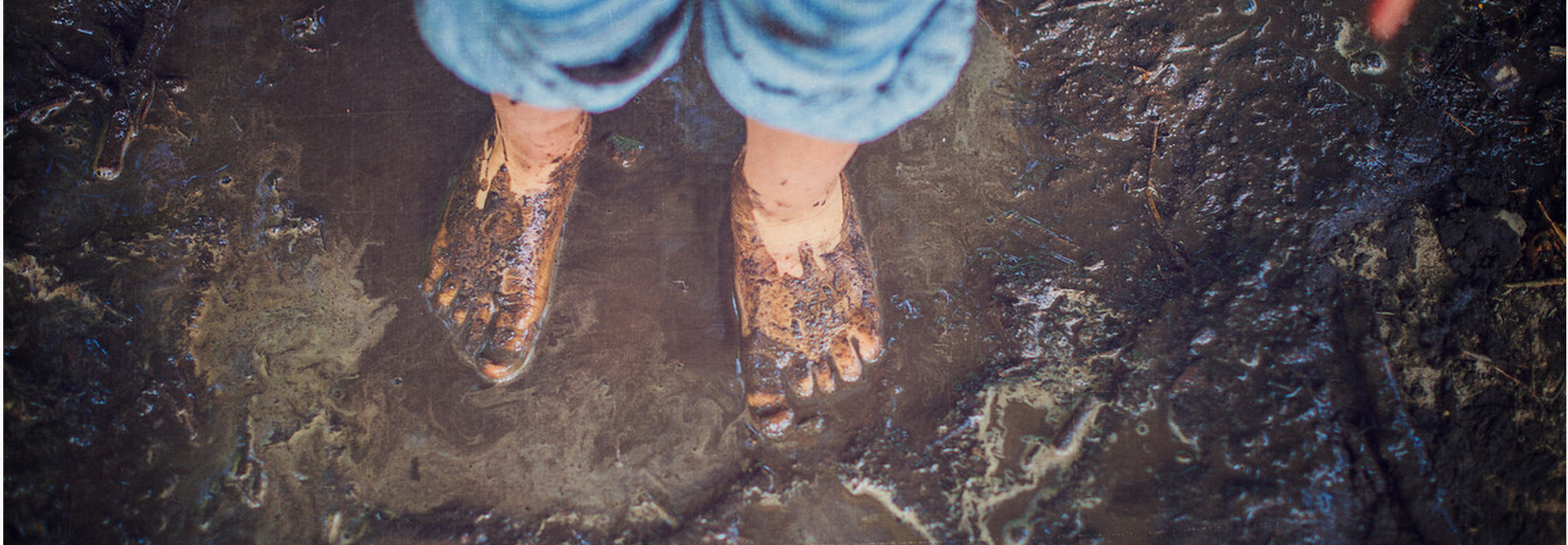Hide and Sound
-
Age: 3 to 8+
-
Time: Under 1 hour
-
Materials: blindfold (optional)
- Skills: Focus & Self Control, Active Lifestyle, Sensory
Engaging Sound Activity for Kids
The act of kids trying to make as many different sounds as they can out of nature "stuff" can be a family favorite and time well spent by our standards (check out our Make Music Like Wee Wild Things activity to find out why). Banging and rubbing sticks, shaking limbs and branches, strumming rough bark, rocking a water bottle full of acorns and making drums out of rocks, stumps and logs. Combine the jam session with some game dynamics, though, and the play can go to a whole new level.
After plenty of impromptu music making, walk around the woods, “instruments” in hand. Make very little sound. Make lots of sound. Drift apart, checking to see if you can still hear each other's sounds. Strike up a game of hide-and-seek—sound edition. What's the gist? The hider picks a tricky hiding spot and makes her sound, while the seeker follows his ear to find her.
The Guide
- Make sounds: Start off with an invitation for kids to join you in making as many sounds as you can. Grab a stick and start drumming, beating, rubbing and messing around to make sounds of your own. Your kids will undoubtedly follow on, making their own music.
- Pick “your” sound: Pick a sound to be “yours” or your favorite. Ask kids what is their special, favorite sound. Circle up and share your sounds.
- Go on a sound parade: Start moving around making your signature sounds. Try to make them as quietly as you can. Try to make them as loudly as you can.
- Suggest a game: “Hey, let’s play hide-and-seek and use our sounds!” Kids 4-7 typically love hide-and-seek and will be game to experiment with adding sound to the beloved game. If they are younger than 4, adding sounds to hide-and-seek will likely be too hard to coordinate and sustain. This ends up pretty fun for all ages, you just have to make the hiding spots extra challenging as kids get older.
- Play: You hide first, trying to make the spot harder than you normally would given your kids’ age(s). Once you are in your spot and your child has counted, make your sound every 20 seconds or so.
- Try it without sight: Grab some cloth or a bandana to use as a blindfold and head to an open space (the woods are too full of roots, logs, etc for this to be safe or fun). Try to play with the seeker blindfolded. Once unable to rely on sight, a seeker has to listen all the more intently, making the experience that much more intense and the learning more powerful. Note: In this version, another adult or the hider should watch out for the seeker, ready to shout a warning if he or she is wandering off too far or heading for a tree, etc.
Why is this activity great for kids?
As kids make sounds and listen intently for the sounds as they seek, they develop not only their sense of hearing but their ability to take in and integrate sensory information.
The ability to block out distractions and stay either on hunt for their sound-making hider or to stay hidden in their sound-making hiding spot are perfect ways to strengthen kids’ focus and self-control.
Although the numbers vary, somewhere around 65 percent of the population consists of visual learners, or people who rely mainly on what they see to learn. That said, a whole lot of information comes at us verbally, in and out of school. So the ability to listen carefully and effectively is still incredibly important for learning, but neither comes easily nor is often nurtured. Strong listening skills also increase people’s success with relationships, both personal and professional.


